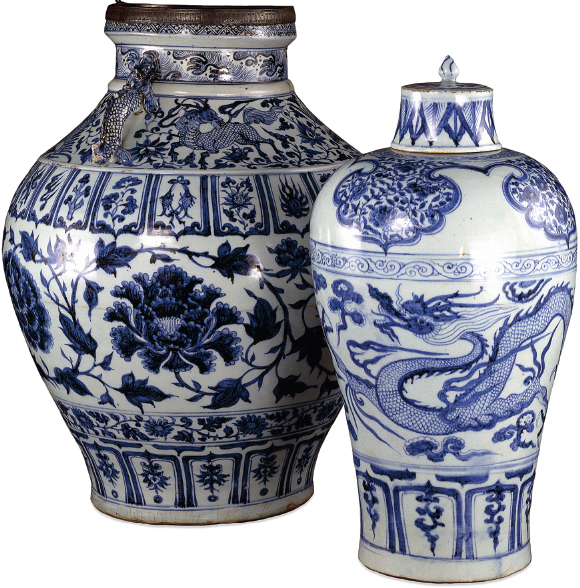Understanding World Societies:
Printed Page 366
Chapter Chronology

Blue-and-White Jars of the Yuan Period
Chinese ceramics had long been in demand outside China, and an innovation of the Mongol period — decorating white porcelain with underglaze designs in blue — proved especially popular. Persia imported large quantities of Chinese blue-and-white ceramics, and Korean, Japanese, and Vietnamese potters took up versions of the style themselves. (© The Trustees of the British Museum/Art Resource, NY)
IIN THE TENTH CENTURY Tang China broke up into separate contending states, some of which had non-Chinese rulers. The two states that proved to be long lasting were the Song, which came to control almost all of China proper south of the Great Wall, and the Liao, whose ruling house was Khitan and which held the territory of modern Beijing and areas north (Map 13.1). Although the Song Dynasty had a much larger population, the Liao was militarily the stronger of the two. In the early twelfth century the Liao state was defeated by the Jurchens, another non-Chinese people, who founded the Jin Dynasty and went on to conquer most of north China, leaving Song to control only the south. After a century the Jin Dynasty was defeated by the Mongols, who extended their Yuan Dynasty to control all of China by 1276.
